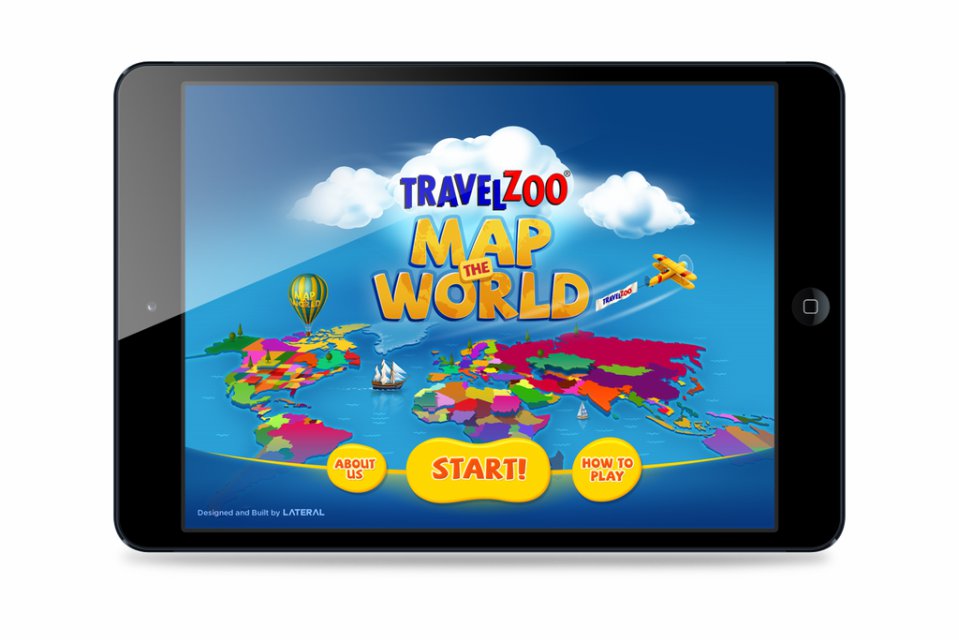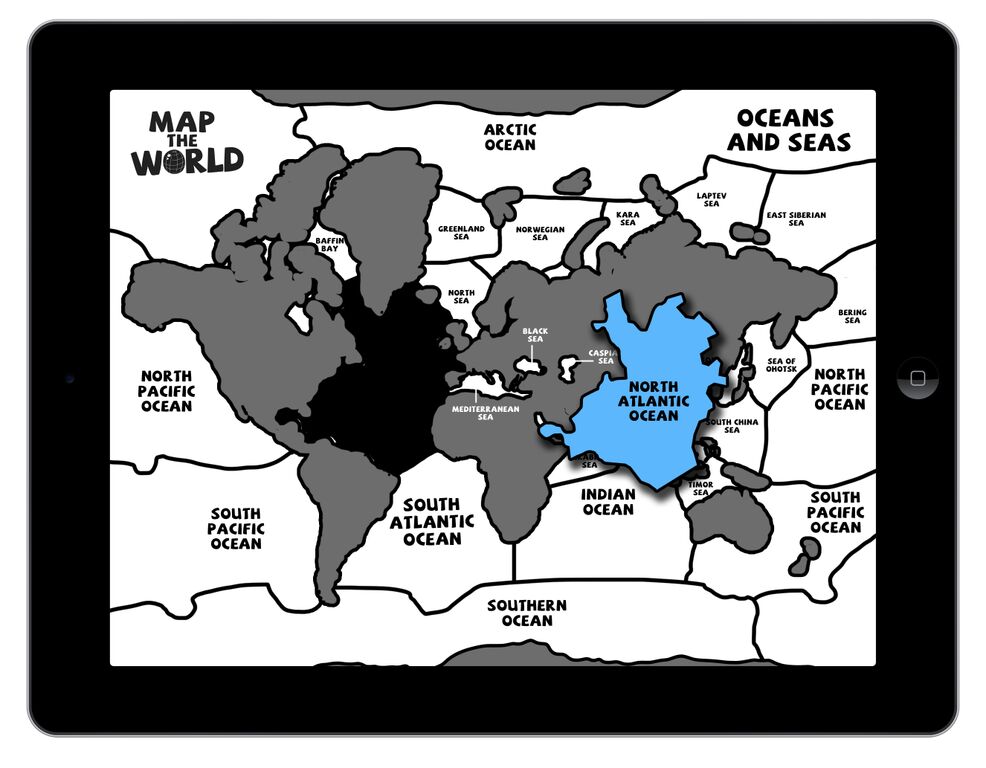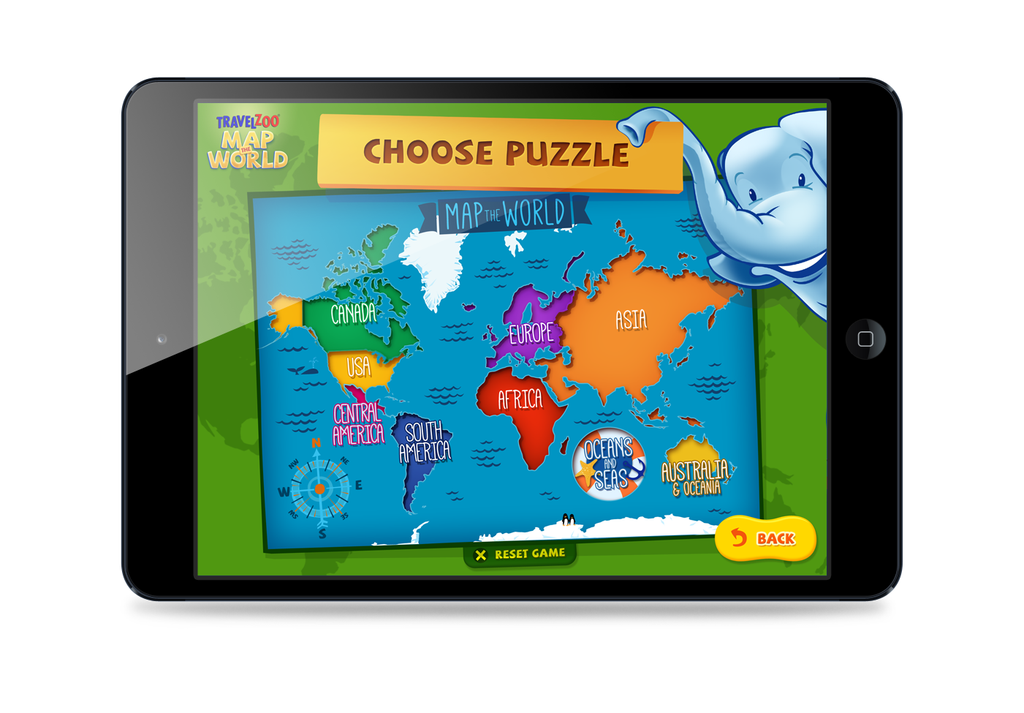Most of Lateral’s products are born from a real need to solve a problem. Such was the case with the iOS game Map the World. Two years ago, Chris Loughlin, CEO of Travelzoo, one of Lateral’s longtime clients and a global Internet media company that publishes travel and entertainment deals, was flying with his five-year-old girl. Being on a long flight, they wanted to build a puzzle of the United States map, but when they came close to finishing, they discovered that the last three pieces – California, Hawaii and Delaware – were missing. To comfort his daughter, Chris downloaded on his iPad all the puzzle-maps games he could find, but noticed there were few that offered a rewarding experience, had attractive graphics and design, and suited a wide range of users, from careful fathers to curious little girls.
So he asked Lateral to create such a game.
The team formed immediately, with a graphics designer and a programmer devoting the next couple of weeks exclusively to Travelzoo – Map the World. The first thing they did, even before the first sketches, was that they decided they would map the entire globe, and have an elephant – the game’s mascot – invite users to go over it and fill in the pieces. (As an extra challenge, a few weeks after the concept was created, a puzzle of the world’s seas and oceans was added.)
Next, the team dealt with the usual challenges related to user experience: what size should the puzzle pieces have, as a kid’s fingermark is different than an adult’s? Should the pieces be made of the states’ outlines or, on the contrary, should the maps have classic jigsaw puzzle pieces? Should they have different colors for marking borders?
Decisions such as offering visual feedback when a piece was put in the right place – through an animation and the increase of the country’s name – demanded long discussions, brainstorming evenings, and user testing.
“Every creative process also involves detours from the initial route, or secondary roads that prove to be closed, or too difficult to take”, says Mircea Drăgoi, Director, Design at Lateral. “In moments like this, the key is the team’s good organization, flexibility, and an ability to give up on certain ideas.”
In order to carry on with an app that’s so complex and resource-consuming, creative teams have to say no to certain ideas that may seem attractive at first, but are too difficult to implement. For example, at some point in the process, the Lateral team gave up the idea of additional characters that would pop-up on the screen and congratulate the player, even if most of the animations were already done, and integrated in the puzzle. But they realized the app would become visually cluttered, the tablet’s processor would be overused and the user experience wouldn’t warrant the effort involved.
When Travelzoo and other Lateral employees tested the game, one of the important decisions was to have an actress record the feedback messages, as well as the continents and countries’ names, which was done in a recordings studio in the US. The game was then tested again, on a larger audience. The latest version can be played against the clock, and the time shared on social networks. After the final touches were made, it was published in US and UK Apple AppStores and had a TV and online marketing campaign.
“Very few things can bring a bigger satisfaction than seeing your work published, your app downloaded by tens of thousands of people – having it played by children and adults alike”, says Mircea. “For Map the World, we had double the reward: not only we had the chance to work on a fun project, but it was also very meaningful: the game’s essence is the educational value: teaching children geography in a fun and engaging way.”
Part of a series dedicated to the supporters who help make the conference possible. We thank them for their contribution.


